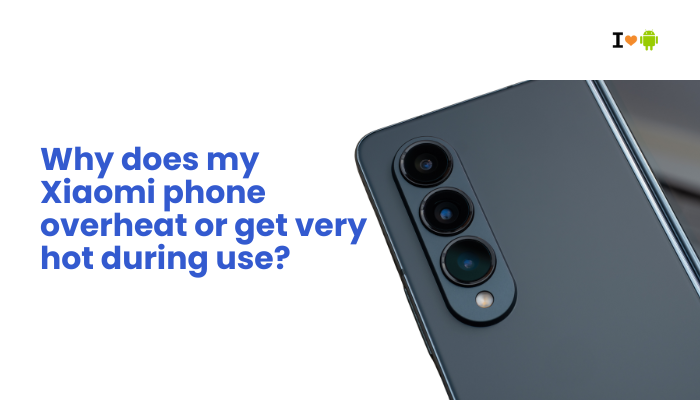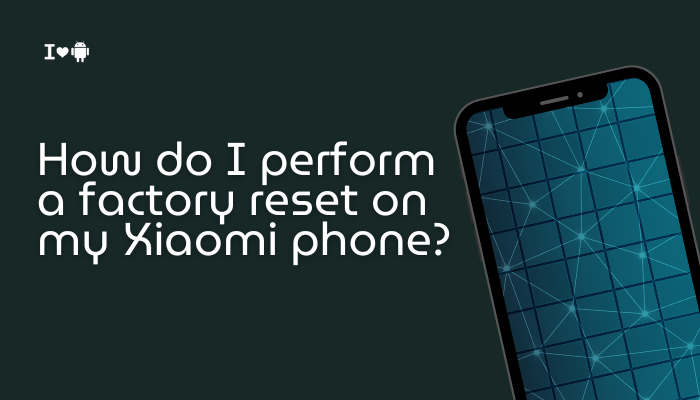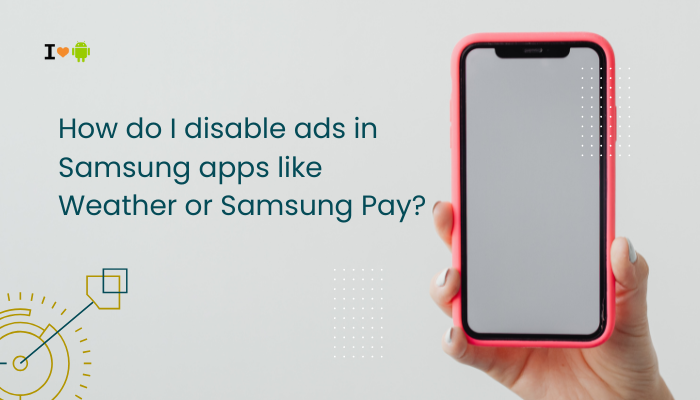Introduction
Experiencing a hot Xiaomi or Redmi smartphone—whether it’s a Poco F series, Redmi Note, Mi 11, or 12T—is common but often alarming. Heat can lead to thermal throttling (slower performance), reduced battery lifespan, and, in extreme cases, hardware damage.

High-Performance SoC Under Sustained Load
Why It Heats
Modern Qualcomm Snapdragon (8-series, 7-series) and MediaTek Dimensity chipsets pack multiple high-power cores and GPUs. Under gaming, benchmarking, or 4K video recording, all CPU and GPU cores fire up at maximum clock speeds, drawing several watts and generating substantial heat.
Fixes
- Enable Performance Profiles Sparingly: In Settings → Battery & performance → CPU Turbo or Performance mode, disable or limit to brief gaming sessions.
- Cap Frame Rates: Within Game Turbo or individual game settings, limit FPS to 60 rather than 120+.
- Close Background Apps: Swipe away other heavy apps in Recents to free CPU headroom.
High-Refresh-Rate Displays
Power Cost of 120–144 Hz
A 120 Hz or 144 Hz AMOLED display consumes 20–30% more power than 60 Hz, as the panel and GPU redraw twice as often.
Fixes
- Switch to 60 Hz: Settings → Display → Refresh rate → Standard (60 Hz).
- Adaptive Mode: If available, use Adaptive so the OS lowers the rate on static screens.
Fast Charging and Thermal Buildup
Warp/Fast Charge Heat
Xiaomi’s 67 W/120 W charging pushes up to 20–25 W into the battery for 0–50% in minutes, heating both cells and surrounding chassis.
Fixes
- Charge in a Cool Environment: Avoid direct sunlight or hot rooms.
- Remove Case While Charging: Allows heat to dissipate.
- Use Slower Charging at Night: Switch off fast-charge in Settings → Battery & performance → Charging for overnight trickle-charge.
5G and Network Radio Usage
RF Power Amplifier Heat
Maintaining a 5G connection—particularly mid-band or mmWave—in weak coverage forces the modem to boost its transmission power, generating up to 1–2 W of additional heat.
Fixes
- Disable 5G in Settings: Settings → SIM cards & mobile networks → Preferred network type → LTE/3G/2G.
- Enable Wi-Fi Calling: If supported, offload calls to Wi-Fi to reduce RF power use.
Background Processes and Sync Tasks
Hidden CPU Loads
Syncing apps—cloud backup, gallery uploads, email, social feeds—wake the CPU periodically. Under MIUI’s aggressive multitasking, these can pile up.
Fixes
- Limit Auto-Sync: Settings → Accounts & sync; disable seldom-used accounts.
- Restrict Background Data: Settings → Apps → [App] → Battery saver → No restrictions for essential only; set others to Block.
MIUI Animations and Effects
GPU-Heavy UI Transitions
MIUI’s rich transition animations and live wallpapers engage the GPU continuously, raising power draw.
Fixes
- Reduce Animations: Enable Developer options (tap Build number 7×), then set Window animation scale, Transition animation scale, and Animator duration scale to 0.5× or Off.
- Use Static Wallpaper: Avoid live or video wallpapers.
App-Specific Behaviors and Malicious Apps
Rogue or Poorly Optimized Apps
Some apps (e.g., cryptomining malware, aggressive ad SDKs) keep the CPU/GPU awake 24/7, causing heat.
Fixes
- Monitor Battery Usage: Settings → Battery & performance → Battery usage to spot apps consuming >5%.
- Uninstall or Force-Stop: Remove suspect apps or force-stop them in Apps settings.
- Scan for Malware: Install a reputable mobile security app to detect hidden mining/off-grid processes.
Environmental and Usage Conditions
Ambient Heat
Operating in high ambient temperatures (>35 °C) reduces the phone’s ability to shed heat, compounding internal generation.
Fixes
- Use in Shade or Indoors: Avoid direct sunlight or leaving the phone on hot car seats.
- Take Breaks: For extended gaming or video calls, pause periodically to let the phone cool.
Thermal Paste and Manufacturing Variance
Inconsistent Heat Dissipation
Xiaomi uses graphite sheets or small vapor chambers for heat spread. Manufacturing tolerances and aging can degrade effectiveness over months.
Fixes
- Professional Thermal Re-pad: Under warranty, service centers can reapply thermal interface materials.
- External Cooling Accessories: Clip-on heat sinks or cases with vents can help for extreme gaming.
Software Bugs and Firmware Updates
Modem/RF Driver Bugs
Occasional MIUI updates introduce regressions in power management or modem firmware, leading to unintended heat.
Fixes
- Check for System Updates: Settings → About phone → System update.
- Wipe Cache Partition:
- Power off
- Hold Power + Volume Up to enter Recovery
- Select Wipe Cache
- Reboot
- Factory Reset (Last Resort): Backup data and reset under Settings → About phone → Backup & reset to clear deep software inconsistencies.
Best Practices for Ongoing Thermal Management
- Weekly Reboot: Clears stuck processes and GPU artifacts.
- Keep MIUI Updated: Patches often include thermal optimizations.
- Monitor with Tools: Use apps like CPU-Z or GameBench to log temperature spikes.
- Balanced Charging Habits: Avoid late-night fast charges; use slower overnight modes.
- Minimalist App Set: Uninstall rarely used, resource-hungry apps.
Conclusion
Overheating on Xiaomi/Redmi devices stems from a mix of hardware power, software behavior, network activity, environmental factors, and user habits.
By following the ten solutions above—throttling performance profiles, reducing refresh rates, moderating fast charging, disabling 5G when unnecessary, limiting background sync, cutting animations, removing rogue apps, avoiding hot environments, updating firmware, and practicing balanced usage—you can restore comfortable operating temperatures and prevent thermal throttling.
If issues persist after software remedies, consider a professional service to renew thermal interface materials. With these best practices, your Xiaomi phone will stay cool, responsive, and healthy throughout its lifespan.



